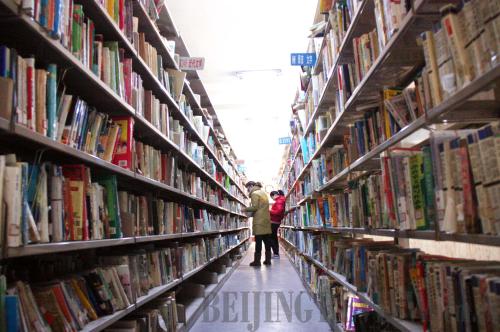|
 |
|
EASY ACCESS TO KNOWLEDGE: Readers browse the shelves in a public library in Liaocheng, Shandong Province (KONG XIAOZHENG) |
Up to the present, most public art museums in China were still charging fees ranging from 5 yuan ($0.73) a person to 30 yuan ($4.39) a person.
In 2007, the outspoken artist and writer Chen Danqing said, "We have many art museums but there is no art-museum culture. Art museums should not function merely as an exhibition space for a handful of artists. They should assume the more important role of serving the public."
Fan said the new policy indicates art museums in China are adjusting to changing times and catching up with Western counterparts.
But Zhu Zhihong, Vice Curator of the Hubei Art Museum, the first non-profit art museum at provincial level to allow visitors free admission, said it was just a minor step in attracting attention.
Better services needed
During the Spring Festival holiday this year, the National Art Museum of China opened up its finest treasures to the public for the first time to mark its 50th anniversary.
The exhibition was free during the seven days of the Chinese lunar New Year in early February and attracted at least 100,000 visitors, said the museum's publicity officer Yu Ge.
However, a possible sudden surge in visitors flocking to free museums has aroused concerns about protection of art works.
Wo Hongliang, President of Art Museum of Beijing Fine Art Academy, said artwork should be kept in an environment with stable temperatures and humidity.
"A greater influx of visitors to museums will no doubt compromise this. We have to improve museum facilities to accommodate more visitors," Wo said.
Other art museums could require visitors to reserve tickets in advance to better control the number of visitors, he said.
Experts are also pushing for a public awareness campaign on protecting artworks for generations to come.
"The National Art Museum will raise awareness on this point for staff and the public before opening free," Yu said.
Art museums and libraries are being encouraged to become more efficient by making changes to their management and organizational structures, and to improve services for special groups such as children, the disabled and the elderly.
In Shanghai, authorities are working to ensure residents can enjoy all available services on a complimentary basis in the near future.
More than 200 municipal and community libraries in the city have opened to the public free of charge. Not only have annual membership fees been canceled, but lectures and exhibitions are also being presented for free as well.
Visitors can enjoy free on-site Internet service as well. Meanwhile, libraries at all levels across the city are planning to establish digital reading rooms.
To ensure the future strength of cultural institutions, finance departments at all levels should provide more money for art galleries and libraries, enabling those institutions to continue operating and improving basic services without relying on entrance fees.
The Central Government also plans to provide special subsidies to art galleries and libraries in the less-developed regions of central and west China.
"Social forces" are also encouraged to donate to and invest in art museums and libraries to broaden sources of funding.
Li Lei, Curator of the Shanghai Art Museum, said the change in policy should not hurt the museum's bottom line as entrance fees only accounted for a small portion of the total revenue.
The museum operates from healthy national subsidies, he said, part of which was being used to improve the museum's facilities for the public in an effort to welcome more people through its doors.
Established in 1956, the Shanghai Art Museum will receive subsidies from the municipal government, which will help compensate for the 20-yuan ($2.93) admission fee collected annually from up to 400,000 visitors, said Zhu Yonglei, Director of the Shanghai Municipal Administration of Culture, Radio, Film and TV.
The only other museum in the city currently categorized as a municipal-level museum is the Liu Haisu Art Museum, but it waived entry fees for the public back in 2007, and will be largely unaffected by the new regulation.
Xu Huaiyu, Director of the Academic Department of the Shanghai Art Museum, said the relationship between the museum and communities had become tighter after the free opening and the museum would use its public cultural platform to provide more and better services for residents in the future.
The National Library of China and the Capital Library
The National Library of China and the Capital Library now basically provide free admission.
The National Library of China started to provide basic services free of charge in early 2008. It is completely without charge to obtain a reader's card or to use the digital resources in its electronic reading rooms. Currently, readers have to apply for library cards and provide a refundable deposit.
The Capital Library cancelled the costs of its readers' cards last year but its study room is still to charge 2 yuan ($0.29) a person a day.
The National Art Museum of China
Admission to the National Art Museum of China will be totally free of charge by the end of this year.
Museum staff said, due to the limited capacity of the museum's space and reception, there had still not been identification of specific measures.
At present, the museum charges 20 yuan ($2.93) for a ticket and 10 yuan ($1.46) for a concession ticket.
(Source: The Beijing News) | 